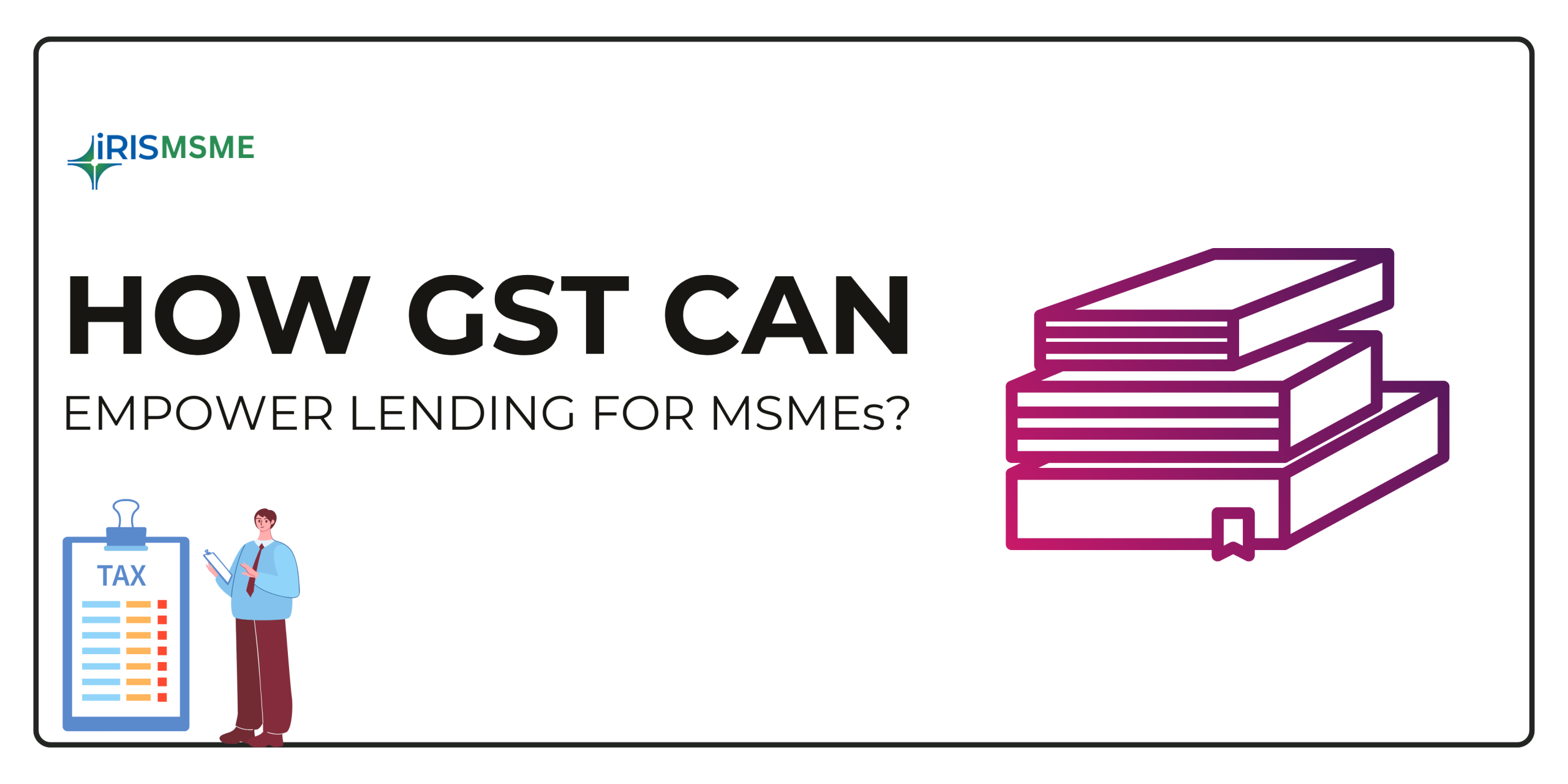
Over the past few years, India has witnessed a major shift in how businesses are recognized, taxed, and supported. One of the most transformational changes in this space was the introduction of the Goods and Services Tax (GST), a unified tax system that brought millions of small and medium enterprises into a structured financial ecosystem.
But what if we told you that GST isn’t just about tax compliance?
What if your GST returns could help you get a loan faster, easier, and cheaper?
Welcome to the world of GST-based lending — a game-changer for MSMEs seeking finance without heavy documentation or collateral.
The MSME Credit Gap: A Persistent Challenge
India has over 6.3 crore MSMEs, but only a fraction of them have access to formal credit. According to estimates, the credit gap in the MSME sector exceeds ₹20 lakh crore. Most small business owners depend on informal lenders, personal savings, or delayed customer payments to keep operations running.
Traditional lending models have failed to serve MSMEs efficiently due to:
- Lack of collateral
- Inadequate credit history
- Complex documentation
- Long approval cycles
This is where data-driven lending models step in — using GST returns as a reliable, real-time indicator of a business’s financial health.
What is GST-Based Lending?
GST-based lending refers to a model where financial institutions assess MSME creditworthiness using their GST return data, rather than relying solely on collateral, audited financials, or past loans.
This includes evaluating:
- Turnover consistency
- Tax payments
- Input tax credits
- Invoice data
- Business growth trends
Since GST is filed monthly or quarterly and linked with PAN and Aadhaar, it offers lenders a trustworthy and updated view of a business’s cash flow and credibility.
Why GST Data is a Strong Signal for Lenders
Let’s explore what makes GST data valuable:
- Verified Sales Turnover
Lenders can see how much revenue a business is generating through outward supplies in GSTR-1 and GSTR-3B.
- Consistency and Stability
A regular filing pattern signals operational continuity and tax discipline, reducing the risk for lenders.
- Input Tax Credit Trail
The availability and usage of ITC reflect the scale of purchases and supplier relationships.
- Real-time Access
Lenders can use Account Aggregators (AA) or platforms like IRIS Peridot to fetch real-time GST data directly with the MSME’s consent.
- Invoice-Level Data
Details like buyer names, invoice amounts, and payment timelines help assess customer risk and supply chain quality.
How the Process Works: Step-by-Step
- MSME gives consent to share GST data with the lender.
- Lender fetches data from the GSTN via APIs or Account Aggregator framework.
- Automated analysis is done — including trends, anomalies, customer diversity, and default risks.
- A credit score or rating is assigned based on this data.
- The loan is approved and disbursed — often without collateral or heavy paperwork.
Benefits of GST-Based Lending for MSMEs
- Faster Loan Approval
No need to wait for audited balance sheets or bank statements. Turnaround time is significantly reduced.
- Access to Unsecured Loans
Even if your business doesn’t have large assets, you can get financing based on your consistent turnover.
- Customized Credit Offerings
Loan amounts, tenure, and interest rates are personalized to match your business’s growth and repayment capacity.
- Build Credit Profile
By using your GST returns as proof of income, you slowly build a formal financial identity — making it easier to access larger loans in the future.
Who is Offering GST-Based Loans Today?
A number of banks, NBFCs, and fintech players have embraced this model, such as:
- SIDBI: Offers working capital loans based on GST and Udyam data.
- ICICI Bank: Provides digital business loans using GST returns.
- Lendingkart, NeoGrowth, FlexiLoans: Use AI and GST APIs to offer quick, unsecured loans.
- MUDRA Loans: Often use GST turnover as a benchmark for micro-enterprise funding.
More lenders are also integrating the Account Aggregator framework, making it easier for MSMEs to share data securely with multiple institutions at once.
Best Practices for MSMEs to Prepare for GST-Based Loans
To make the most of this opportunity:
- File GST Returns Regularly – Avoid missing GSTR-1 or GSTR-3B deadlines.
- Ensure Accuracy – Mismatched invoices or wrong data can affect credit evaluation.
- Link PAN, Aadhaar, and Udyam – This creates a connected profile across systems.
- Use Digital Tools – Platforms like IRIS Peridot can help you track compliance and generate insights automatically.
- Maintain Good Vendor Relationships – Input tax credit and invoice match play a role in creditworthiness.
Conclusion
GST isn’t just a tax—it’s your ticket to formal finance.
By filing your returns on time, maintaining transparency, and leveraging different platforms, you can access the loans and capital your business needs to grow.
